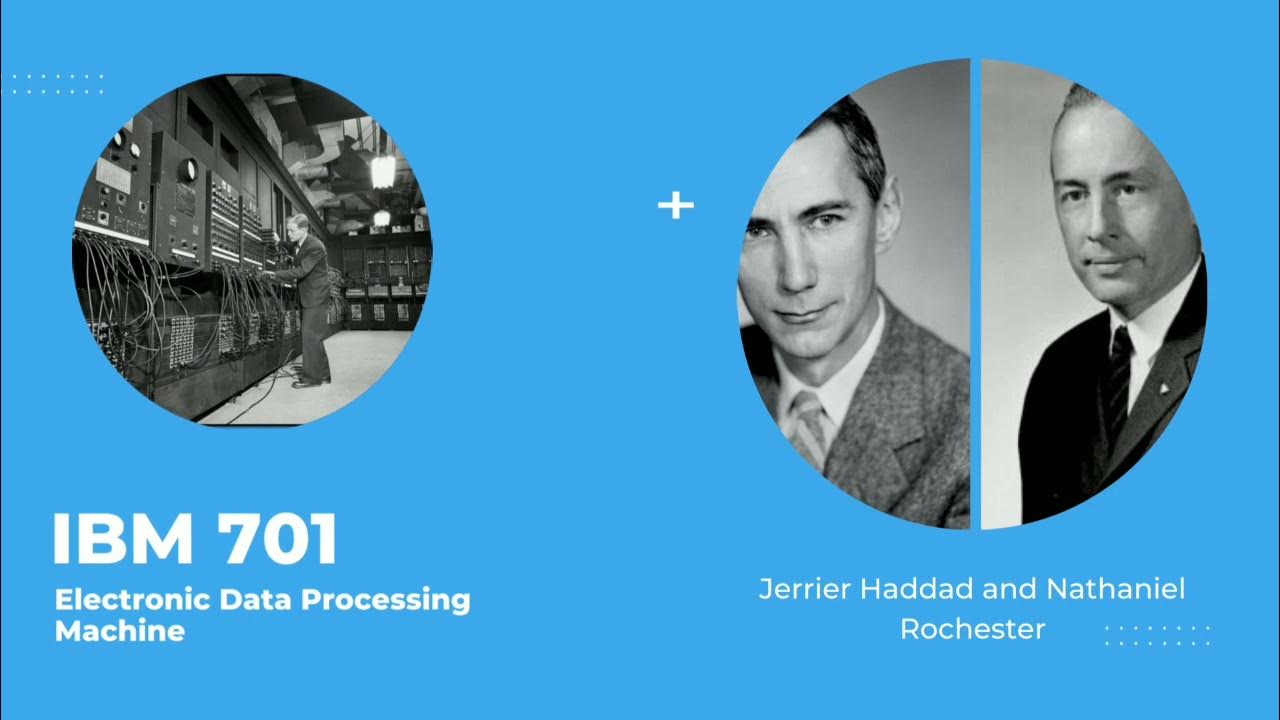SEJARAH SINGKAT SISTEM OPERASI (OPERATING SYSTEM) KOMPUTER DARI GENERASI AWAL HINGGA KINI
Summary
TLDRThis video explores the evolution of operating systems, tracing their development from Charles Babbage's initial concepts to modern cloud computing. It outlines key milestones, including the transition from manual input to batch processing, the rise of multiuser systems in the third generation, and the introduction of graphical user interfaces in the fourth generation. The narrative highlights the shift towards cloud technology in the fifth generation, emphasizing its impact on storage and computing power. Overall, it showcases the significant advancements in operating systems that have transformed user interaction with technology over time.
Takeaways
- 😀 The operating system (OS) is crucial software that manages hardware and facilitates user interaction with computers.
- 🧑💻 Charles Babbage is known as the father of computers, while Ada Lovelace is recognized as the world's first programmer.
- 📜 The first digital computers, designed by Babbage, did not have an operating system; users interacted directly with the machine.
- ⌛ The first generation of operating systems (1945-1955) involved manual instructions without any software.
- 📊 Batch processing systems emerged in the second generation (1955-1965), allowing jobs to be executed sequentially.
- 👥 The third generation (1965-1980) introduced multiuser and multitasking capabilities, enhancing system functionality.
- 🖥️ The fourth generation (1982) saw the rise of graphical user interfaces (GUIs), making computers more accessible to users.
- 📱 Mobile operating systems began to develop, supporting portable devices like laptops and pocket PCs in the fourth generation.
- ☁️ The fifth generation of operating systems focuses on cloud computing, shifting data storage from local devices to the internet.
- 🔮 Future developments in computing may involve nanotechnology, enabling even smaller and more integrated devices.
Q & A
What is the primary function of an operating system?
-An operating system manages hardware resources and provides an interface for users to interact with the computer.
Who is considered the father of computers?
-Charles Babbage is known as the father of computers for designing the first mechanical computer, the Analytical Engine.
What significant role did Ada Lovelace play in computing history?
-Ada Lovelace is recognized as the first programmer in the world, as she worked on the Analytical Engine and developed algorithms for it.
How did the first generation of operating systems operate?
-The first generation of operating systems (1945-1955) did not have formal OS; users provided direct instructions to the computer without any software.
What is batch processing, and when was it introduced?
-Batch processing is a method where jobs are executed in a sequence without user interaction. It was introduced in the second generation of operating systems (1955-1965).
What advancements characterized the third generation of operating systems?
-The third generation (1965-1980) introduced multiuser and multitasking capabilities, allowing multiple users to interact with the computer simultaneously.
What innovation in user interface design emerged in the fourth generation of operating systems?
-The fourth generation (1982-Present) saw the introduction of graphical user interfaces (GUIs), making it easier for users to interact with computers visually.
What is cloud computing, and how does it relate to the fifth generation of operating systems?
-Cloud computing is a system where applications and data are stored online instead of on local devices. It represents the fifth generation of operating systems, focusing on internet-based computing.
What potential future technology could impact the design of computers, according to the transcript?
-Nanotechnology is mentioned as a potential future development, which may enable computers to become significantly smaller and more integrated with other devices.
How have operating systems evolved in terms of data storage from earlier generations to now?
-Earlier operating systems relied on local storage, while modern systems increasingly utilize cloud storage, allowing data to be accessed and managed online.
Outlines

Dieser Bereich ist nur für Premium-Benutzer verfügbar. Bitte führen Sie ein Upgrade durch, um auf diesen Abschnitt zuzugreifen.
Upgrade durchführenMindmap

Dieser Bereich ist nur für Premium-Benutzer verfügbar. Bitte führen Sie ein Upgrade durch, um auf diesen Abschnitt zuzugreifen.
Upgrade durchführenKeywords

Dieser Bereich ist nur für Premium-Benutzer verfügbar. Bitte führen Sie ein Upgrade durch, um auf diesen Abschnitt zuzugreifen.
Upgrade durchführenHighlights

Dieser Bereich ist nur für Premium-Benutzer verfügbar. Bitte führen Sie ein Upgrade durch, um auf diesen Abschnitt zuzugreifen.
Upgrade durchführenTranscripts

Dieser Bereich ist nur für Premium-Benutzer verfügbar. Bitte führen Sie ein Upgrade durch, um auf diesen Abschnitt zuzugreifen.
Upgrade durchführenWeitere ähnliche Videos ansehen
5.0 / 5 (0 votes)






